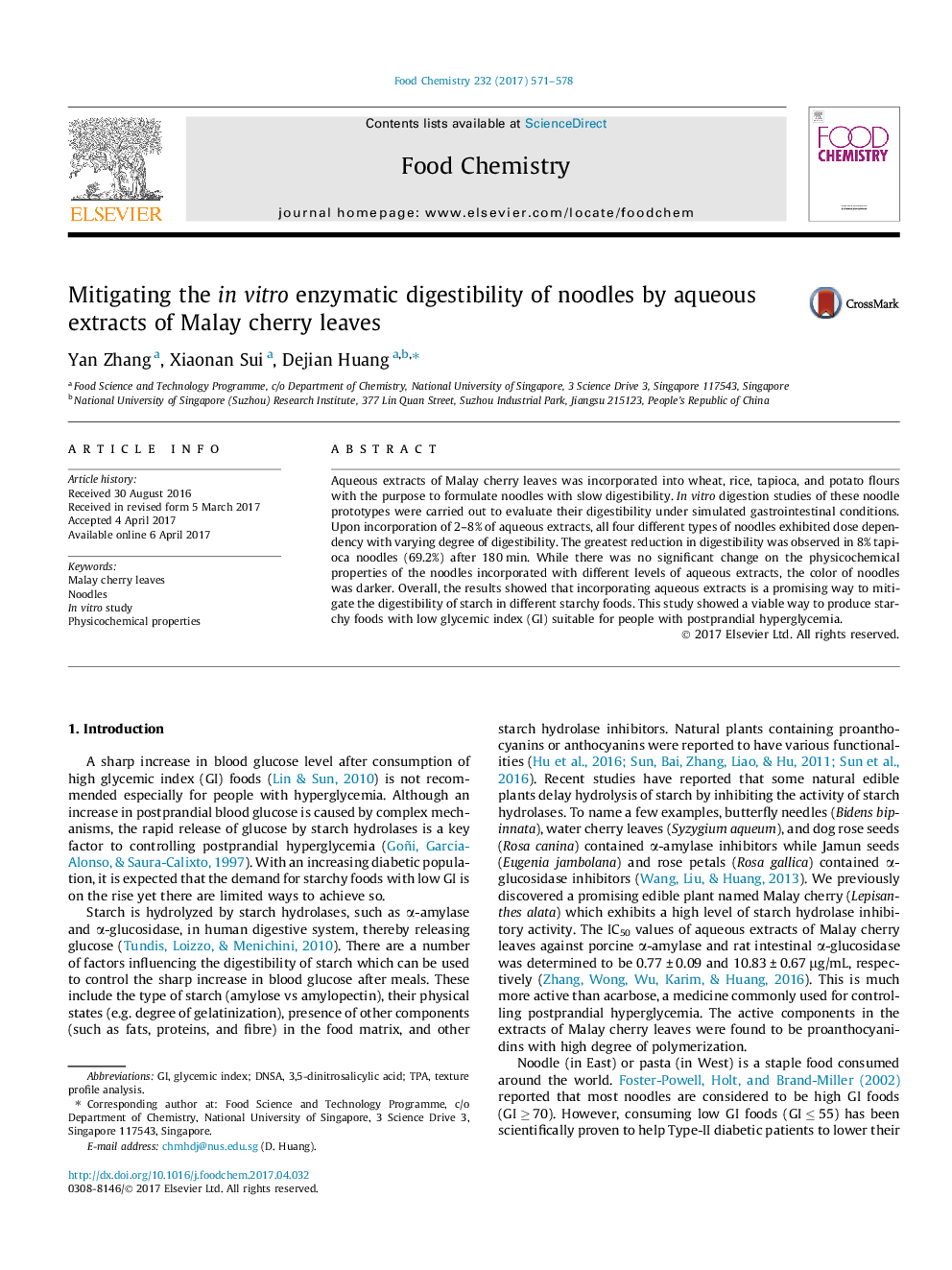| Article ID | Journal | Published Year | Pages | File Type |
|---|---|---|---|---|
| 5133438 | Food Chemistry | 2017 | 8 Pages |
â¢Four types of noodles were incorporated with Malay cherry leaf aqueous extracts.â¢Digestibility of noodles was evaluated using in vitro study.â¢Noodles with 4% aqueous extracts showed significantly low rate of digestibility.â¢Physicochemical properties of noodles were not compromised by the extracts.
Aqueous extracts of Malay cherry leaves was incorporated into wheat, rice, tapioca, and potato flours with the purpose to formulate noodles with slow digestibility. In vitro digestion studies of these noodle prototypes were carried out to evaluate their digestibility under simulated gastrointestinal conditions. Upon incorporation of 2-8% of aqueous extracts, all four different types of noodles exhibited dose dependency with varying degree of digestibility. The greatest reduction in digestibility was observed in 8% tapioca noodles (69.2%) after 180Â min. While there was no significant change on the physicochemical properties of the noodles incorporated with different levels of aqueous extracts, the color of noodles was darker. Overall, the results showed that incorporating aqueous extracts is a promising way to mitigate the digestibility of starch in different starchy foods. This study showed a viable way to produce starchy foods with low glycemic index (GI) suitable for people with postprandial hyperglycemia.
